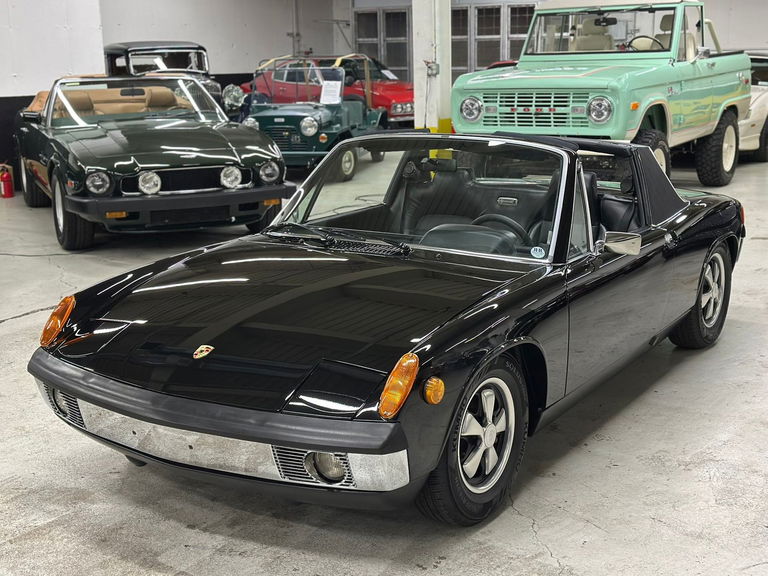According to the Certificate of Authenticity, this 914-6 was originally finished in Silver Metallic (color code 8010) with a black leatherette interior with basketweave. This 914-6 was optioned from the factory with USA equipment, leather-covered steering wheel, fog lights, driving lights, center seat cushion, tinted glass all round, alloy wheels, 185 HR 14 tires, and a Becker radio (a Blaupunkt AM/FM Blue-Dot radio has now been installed).
Mechanically, this 914-6 runs perfectly with a numbers-matching 2.0-liter flat-six (type 901/38) rated at 110 horsepower, a smooth-shifting 5-speed 901 manual dogleg transmission, and four-wheel disc brakes. The wheels are 14” x 5.5″ Fuchs alloy rims with Vredestein 185 HR 14 tires. The interior is all original and is finished in black leatherette with a leather-wrapped steering wheel. This 914-6 is very straight and rust-free with excellent gaps and panel fit. Complete with Porsche Certificate of Authenticity, original owner’s manual, tool kit, spare tire, records dating back to 1970. An excellent opportunity to acquire an outstanding 914-6 in a very desirable color combination.
History
Porsche’s 914-6 variant featured a carbureted 110 bhp (82 kW; 112 PS) 2.0 L flat-6 engine from the 1969 911T, placed amidships in front of a version of the 1969 911’s “901” gearbox configured for a mid-engine sports car. Karmann manufactured the rolling chassis at their plant, completing Volkswagen production in-house or delivering versions to Porsche for their final assembly. The 914-6 models used lower gear ratios and high brake gearing in order to try to overcome the greater weight of the six-cylinder engine along with higher power output. They also featured five-lug wheels and ignition on the left side of the steering wheel. Suspension and handling were otherwise mostly the same.
By the late 1960s, both Volkswagen and Porsche were in need of new models; Porsche was looking for a replacement for their entry-level 912, and Volkswagen wanted a new range-topping sports coupe to replace the Karmann Ghia. At the time, the majority of Volkswagen’s developmental work was handled by Porsche, part of a setup that dated back to Porsche’s founding; Volkswagen needed to contract out one last project to Porsche to fulfill the contract and decided to make this that project. Ferdinand Piëch, who was in charge of research and development at Porsche, was put in charge of the 914 project. Porsche 914 replaced the top of VW’s line, the Type 34 Karmann Ghia.
Continue reading


























































































